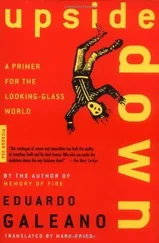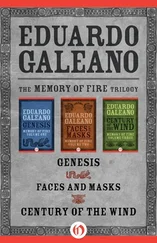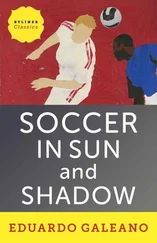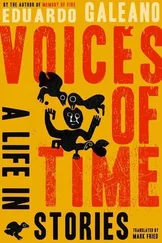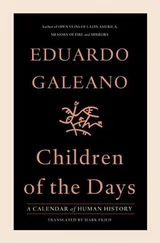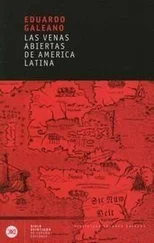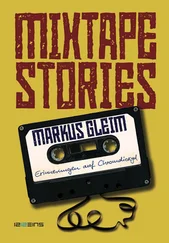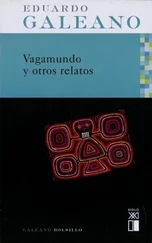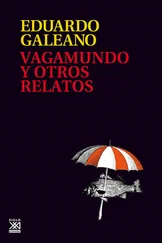From where Hiroshima lay, an atomic cloud rises. From the tail of the airplane, military photographer George R. Caron snaps the picture.
The immense, beautiful white mushroom becomes the logo of fifty-five companies in New York and of the Miss Atomic Bomb pageant in Las Vegas.
A quarter of a century later, in 1970, several photographs of the victims of radiation are published for the first time. They had been a military secret.
In 1995, the Smithsonian Institution in Washington announces a large exhibit on the explosions at Hiroshima and Nagasaki.
The government quashes it.

Three days after Hiroshima, another B-29 flies over Japan.
The gift it bears, larger, rounder, is called Fat Man.
After testing uranium in Hiroshima, the experts want to try their luck with plutonium. A dense cloud cover blankets Kokura, the chosen city. After circling three times in vain, the airplane changes course. Bad weather and low fuel decide the extermination of Nagasaki.
As in Hiroshima, the thousands upon thousands of victims are all civilians. As in Hiroshima, many thousands more will die later on. The nuclear age is dawning and giving birth to a new disease, the final cry of civilization: radiation poisoning, which after each explosion continues to kill for centuries upon centuries.

The first bomb was tried out in the desert of New Mexico. The sky caught fire and Robert Oppenheimer, who led the tests, felt proud of a job well done.
But three months after the explosions at Hiroshima and Nagasaki, Oppenheimer said to President Harry Truman:
“I feel I have blood on my hands.”
And President Truman told Secretary of State Dean Acheson:
“I don’t want to see that son of a bitch in this office ever again.”
PHOTOGRAPH: SADDEST EYES IN THE WORLD

Princeton, New Jersey, May 1947.
Photographer Philippe Halsman asks him:
“Do you think there will be peace?”
And while the shutter clicks, Albert Einstein says, or rather mutters:
“No.”
People believe that Einstein got the Nobel Prize for his theory of relativity, that he was the originator of the saying “Everything is relative,” and that he was the inventor of the atom bomb.
The truth is they did not give him a Nobel for his theory of relativity and he never uttered those words. Neither did he invent the bomb, although Hiroshima and Nagasaki would not have been possible if he had not discovered what he did.
He knew all too well that his findings, born of a celebration of life, had been used to annihilate it.
HOLLYWOOD HEROES THEY WERE NOT

The Soviet Union contributed the dead.
On that, all the Second World War statistics agree.
In this war, the bloodiest in history, the people who had humiliated Napoleon made Hitler taste the dust of defeat. The price was high: the Soviets suffered more than half of all the Allied deaths and more than twice all the Axis deaths.
Some examples, in round numbers:
in the siege of Leningrad, half a million died of hunger,
the battle of Stalingrad left a mountain of eight hundred thousand Soviet dead or wounded,
seven hundred thousand died defending Moscow, and another six hundred thousand in Kursk,
in the assault on Berlin, three hundred thousand,
the crossing of the Dnieper River cost a hundred times as many lives as the invasion of Normandy, yet is a hundred times less famous.

Ivan the Terrible, the first tsar of all the Russias, began his career in childhood killing the prince who cast a shadow on his road to throne. He ended it forty years later crushing his own son’s skull with his cane.
Between those two feats, he gained fame for
his black guard warriors, black horses, long black capes, of whom even the stones were terrified,
his enormous cannons,
his invincible fortresses,
his habit of calling a traitor anyone who did not bow as he passed,
his tendency to sever the heads of his most talented courtiers,
his Cathedral of St. Basil, the symbol of Moscow, erected to offer his imperial conquests to God,
his will to be the bastion of Christianity in the Orient,
and his long mystical torments, when he repented and wept tears of blood, beat his breast, scraped his fingernails against the walls, and howled, begging to be forgiven for his sins.
Four centuries later, during the most tragic hours of the Second World War, in the middle of the German invasion, Stalin asked Sergei Eisenstein for a movie about Ivan the Terrible.
Eisenstein made a work of art.
Stalin did not like it one bit.
He had asked for a piece of propaganda and Eisenstein had not understood: Stalin the Terrible, the last tsar of all the Russias, implacable scourge of his enemies, wanted to turn the patriotic resistance to the Nazi avalanche into a personal exploit. The sacrifice of all was not an epic struggle of collective dignity, rather the ingenious inspiration of the chosen one, the masterpiece of the highest priest of a religion called the Party and a god called the State.
ONE WAR DIES, OTHERS ARE BORN

On April 28, 1945, while Mussolini swung by his feet in a square in Milan, Hitler prowled his Berlin bunker. The city burned and bombs fell nearby, but he hammered his fist on his desk and shouted orders to no one. His finger on the map, he ordered the deployment of troops that no longer existed, and over a telephone that no longer worked he summoned his dead or fleeing generals.
On April 30, when the Soviet flag rose over the Reichstag, Hitler shot himself, and on the night of May 7 Germany surrendered.
Very early the following morning, crowds filled the streets of cities across the world. It was the end of a global nightmare that had lasted six years and caused fifty-five million deaths.
Algeria was also one big party. In the two World Wars, many Algerian soldiers had given their lives for freedom, the freedom of France.
In the city of Sétif, in mid-celebration, the flag outlawed by the colonial power was raised alongside the flags of the victors. The green and white standard, the national symbol of Algeria, drew cheers from the crowd, and a young Algerian named Saâl Bouzid wrapped himself in it and was peppered with bullets, killed from behind.
And the rage exploded.
In Algeria and in Vietnam and everywhere.
The end of the world war sparked rebellions in the colonies. The subjugated, cannon fodder in Europe’s trenches, rose up against their masters.

No one was missing.
All of Vietnam in a single square.
A skinny, bony peasant with a goatlike beard spoke to the multitude gathered in Hanoi.
He had gone by many names. Now they called him Ho Chi Minh.
He was a man of words as soft and measured as his gait. Unhurried, he had visited many places and survived many misadventures. It was as if he were talking to his neighbors in the village when he said to the immense crowd:
Читать дальше








